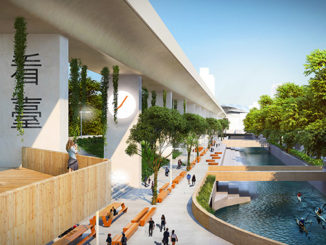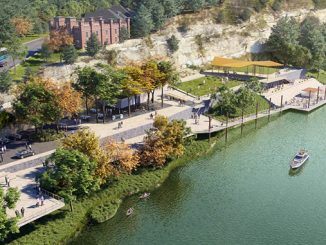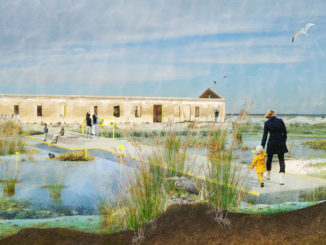Landscape architects use a set of processes and approaches taught at universities and institutions as the common approach or common practice expected by clients, the community, and the larger design industry. These processes are seen as the minimum for a designer to meet the expected industry standard. Of course, expectations differ depending on the place, country, and industry maturity in the project location.
Over the past few decades, the term “best practice” has become part of client and designer jargon to define or market their design process, approach or projects and was seen as a way to move the design industry forward. Often the expectation or interpretation of best practice can differ; however, it has become expected by the clients and communities that designers were applying “best practice” so much as to become written into project briefs and contracts.
Best practice often means applying a known standard (such as LEED or Green Star or similar) to create and develop designs for projects to a certain level of design and performance. However, as numerous standards for design, sustainability, transport, materials, and other elements have come into effect and implementation, we have seen the design industry has become complacent about best practice. What once was a stretch or aspiration has become the norm due to education, technology, improved design, and the industry’s maturity.
As designers, landscape architects, we need to become more proactive in participating, evolving and developing standards and practices. We need to move to leading practice(s) rather than best practice. A leading practice is an approach that every designer strives to develop or try a new approach to advance their project and the industry. People will see this as too optimistic and idealistic and state that this approach will often not eventuate because clients often don’t even meet best practice. Understandably this is due to clients not willing to spend the time or money. However, there is a shift occurring at various levels of government and business as they realise that the world has hit a stagnant period, in which productivity is lower, environmental pressures are higher, and costs are increasing. Now is the time to start educating and striving to lead practices rather than stick to the tried-and-true best practice.
How can we move from best practice to leading practice?
In Your Practice and Schools
Assess your current tools, standards and approaches and determine if they have become too ingrained in the design process. Maybe it is time to challenge the practice methodology and take more of a leading-edge approach to design, development and construction.
Participation
Through participation in the design process, whether with our local authorities, registration boards, certification bodies, designers need to be at the table to participate and say how standards and guidelines are developed and revised. Sticking to the same standard or weakening current standards allows projects and initiatives to flounder and go back to common practice.
Innovation
Always a contentious issue of how and what innovation is. We need to move forward beyond the conversation and discourse around innovation and start to test, trail, record and assess any new idea, concept or standard.
Assess and Evolve
Best practice can often become accepted, and it needs to be regularly assessed, tested and challenged to evolve into a new leading practice. Also, these practices need to be tested and evaluated in various locations (local, regionally and global) to determine whether we can replicate the approach.
Fine Tuning
These new practices need to be tested and developed for local and regional conditions. Best or leading practices often need to be fine-tuned for local conditions (climatic, cultural, etc.) to ensure that they are appropriate for the project.
How can this occur in the landscape architecture industry?
In landscape architecture firms, organisations, and groups, often seek to innovate and improve upon common and best practices, whether creating a library of new materials or utilising technology to determine the best approach for procuring materials most efficiently and sustainably or just trying a different planting design methodology.
It is up to each landscape architect, firm, group and organisation to endeavour to use leading practice. It will be hard, use up billable time and energy to advance practices within the industry, but we need to strive to move to leading practices.
We have lost some time (and momentum) over the past year, and many of the standards we use are over a decade old and, in some cases, 30 years old. The world and the landscape industry has changed; it is time for the landscape architecture profession to endeavour to develop and utilise leading practices in the coming decade.
Moving from Common Practice to Best Practice to Leading Practice was written by Damian Holmes, Founder and Editor of WLA. A registered Landscape Architect with over 20 years of experience.
Email damian@worldlandscapearchitect.com if you would like to discuss the above article.
Image Credit used for Cover: Flickr User Sheila Sund – Original Image
DISCLAIMER: This article is for educational purposes only. The content is intended only to provide a summary and general overview on matters of interest. It’s not intended to be comprehensive, nor to constitute advice. You should always obtain legal or other professional advice, appropriate to your own circumstances, before acting or relying on any of that content. This advice is general in nature.



